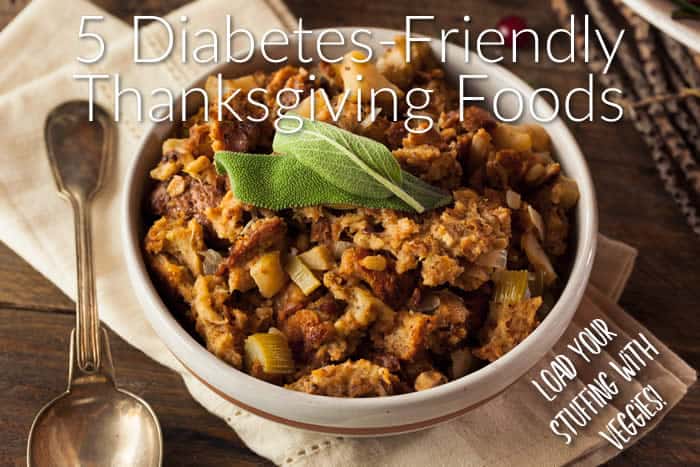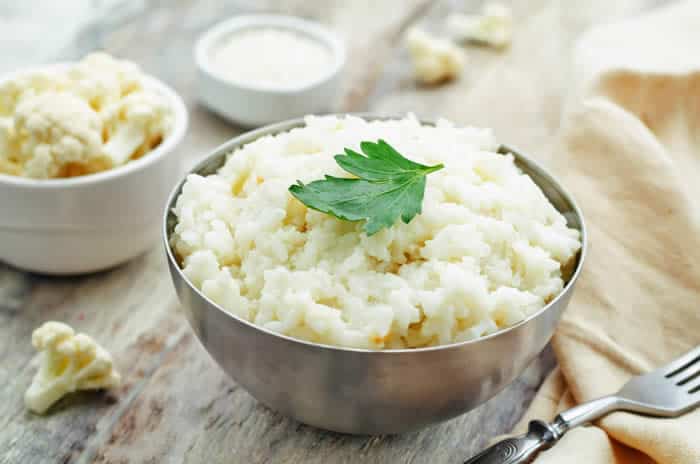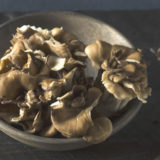

For many, Thanksgiving is synonymous with foods that are high in carbohydrates. Stuffing, mashed potatoes and gravy, and pumpkin pie are all common on this day of thanks. But these options aren’t the best choices for someone with diabetes because their bodies don’t make or use enough insulin to respond to these foods effectively, potentially causing their blood sugar to go up.
Since November is National Diabetes month, we want to provide a few ways to make this holiday more enjoyable for your loved ones with diabetes. What foods are more friendly to someone with this disease, other than turkey—the star of the typical Thanksgiving meal?
There are five options to consider.
1. Stuffing Loaded with Veggies, Seeds, and Meat
Traditional stuffing is primarily bread, but it doesn’t have to be made that way. Make veggies the focus of this dish for a more diabetes-friendly Thanksgiving version. Increase the celery and onions and add a bit of cauliflower for another taste and texture. Throw in some sunflower seeds for crunch and ground meat for a protein boost.
There are almost endless ways to make a stuffing that is lower in carbs. Play around and have fun coming up with your own take on this age-old side dish.
2. Faux Mashed Potatoes

If you have a craving for mashed potatoes at Thanksgiving but are watching your carb intake, try faux mashed potatoes instead. You can make mock mashed potatoes out of cauliflower, for instance. Add a little cream cheese during the blending stage for the creaminess of real mashed potatoes. Throw in some parmesan cheese for a boost of flavor.
Make this dish even healthier by swapping the butter with unsweetened Greek yogurt or even pureed avocado. Both add a creamier texture without adding unhealthy fat.
3. Naked Sweet Potato Casserole
Part of what makes sweet potato casserole an issue for someone with diabetes is that, oftentimes, it is topped with a mound of marshmallows. This elevates this dish’s sugar content to a range that can make it an unhealthy choice.
One way to enjoy sweet potato on Thanksgiving Day is to nix the marshmallow topping. Since it is naturally sweet anyway, you may not even notice much of a difference.
Research also indicates that the cooking method may affect the glycemic index (GI) rating of this vegetable, with boiling having the lowest GI value, followed by roasting and then baking. (1)
4. Sauteed Low-Carb Veggies
One cup of cooked corn provides roughly 31 grams of carbohydrates. (2) While corn isn’t completely off the table for someone with diabetes, when it is eaten in addition to other foods that may be higher in carbs, the effects can add up.
Eating low-carb veggies can help keep the Thanksgiving meal lower in this macronutrient. Sautee some spinach with a bit of garlic for an alternate veggie dish that is less than 7 grams of carbs per cup. (3) Or make cabbage the star of the dish for around 8 grams of carbs, (4) accompanied by some sauteed onion for flavor. These options provide a lot of taste without offering a lot of carbs.
5. Pumpkin Pie, Minus the Crust

If you can’t imagine a Thanksgiving meal without a slice of the customary pumpkin pie, you don’t necessarily have to deprive yourself of this dessert just because you have diabetes. Go ahead and put a slice on your plate. Except, when you eat it, just eat the pumpkin portion of the pie and leave the crust. This helps reduce your carb intake while also lowering your fats since the crust is made with a lot of butter.
Conclusion
If these types of foods are on your Thanksgiving table, it can help someone with diabetes enjoy the holiday meal with less worry about the potential blood sugar effects. That makes it a more pleasant day for everyone, regardless of their dietary needs.




